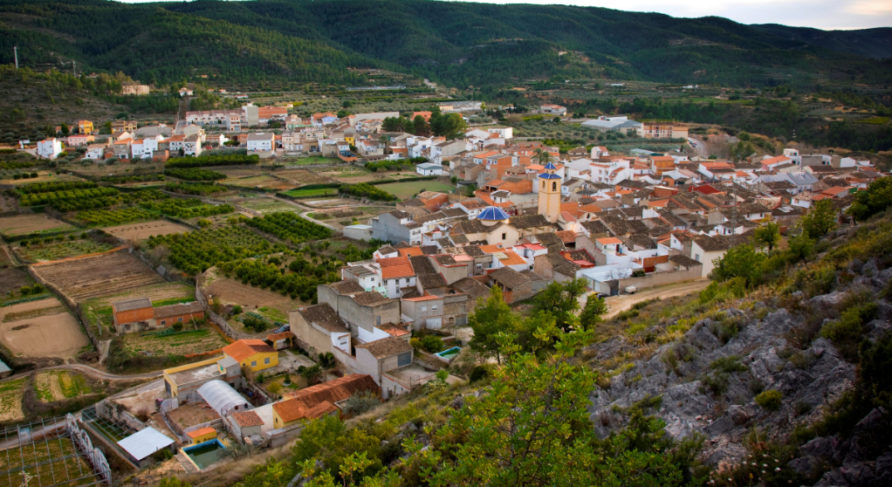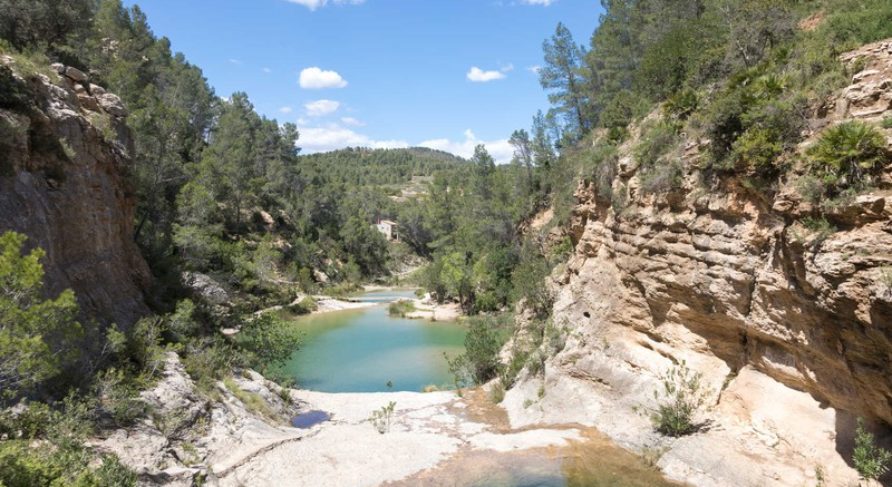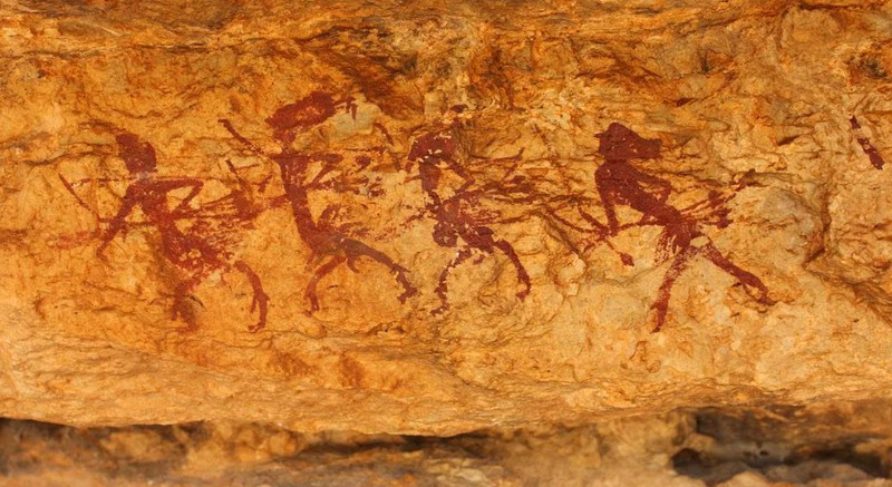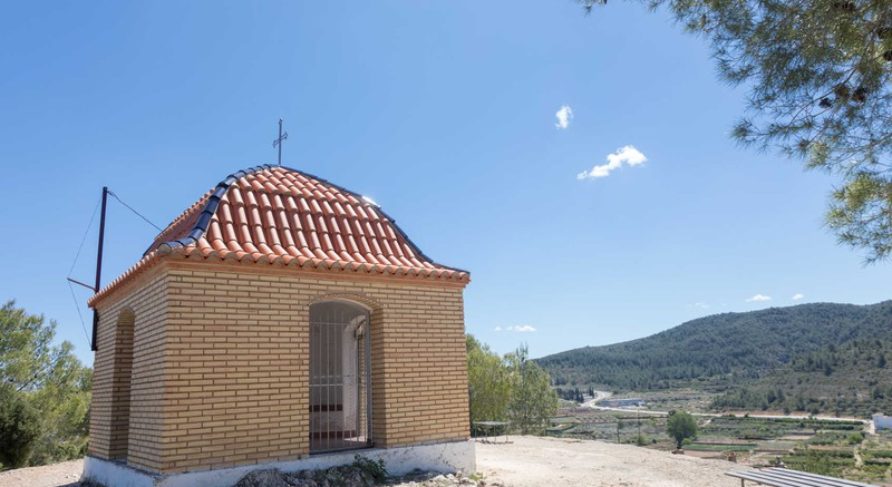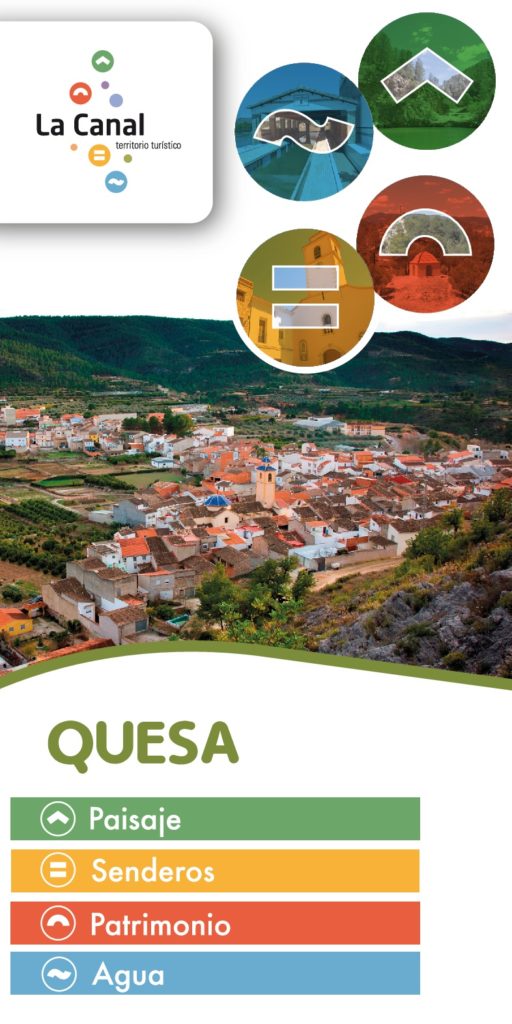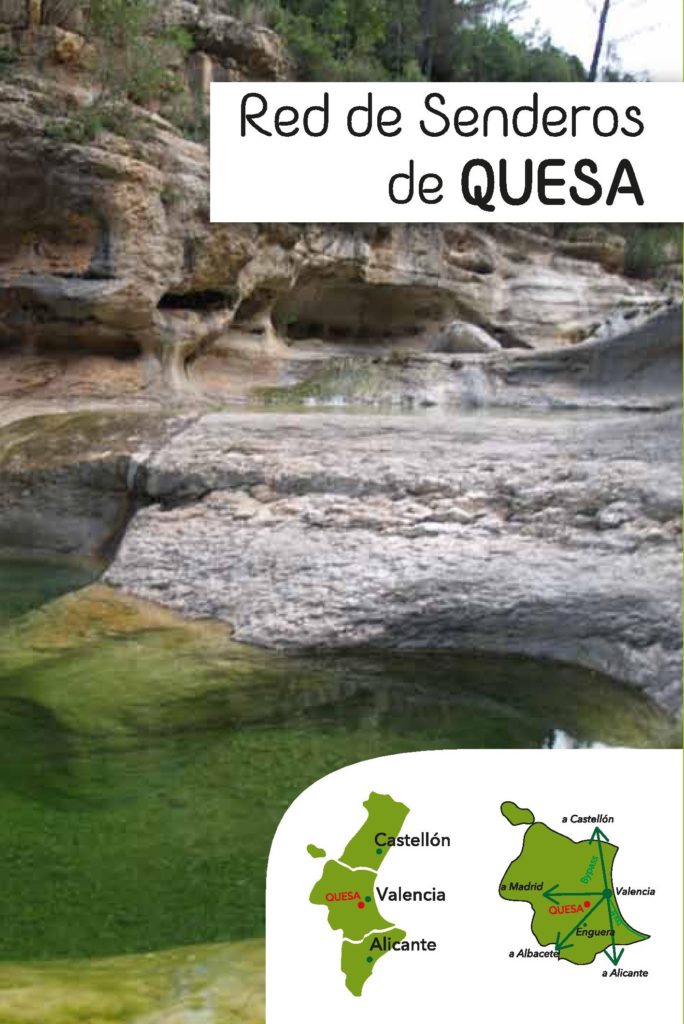Quesa is located in a valley surrounded by fertile agricultural land, irrigated by the Fuente de la Mina spring (channelled via a tunnel to the current Plaza Diputación). Opposite it is the Municipal Wash House and irrigation pool, from where an irrigation channel distributes its water to the “Huerta del Lugar”: this is a legacy of the Moors. Quesa was repopulated by settlers of Aragonese origin, however it was almost wiped off the face of the map by an epidemic in 1690. Only one family remained, the García family, until the town was repopulated and the Holy Sacrament was brought from Bicorp (1695), which gave rise to the La Reserva festival held each February. From then on, the town grew forming long, narrow streets, which still preserve their “cambras”, balconies adorned with ironwork and other elements that are typical of traditional Mediterranean architecture. The colonial building known as Casa de las Palmeras (House of the Palm Trees) on Avenida Valencia is from a more modern era.
The 18th-century Church of St. Anthony the Abbot, with its dome over pendentives and relatively austere style, has a splendid baroque altar in the transept dating from 1787. Next to the church is a curious and narrow “carrerón” (alley). The bell tower still has the original clock mechanism operating. On the hill next to the town are the Moorish rammed earth remains of Quesa Castle (11th century) and the Chapel of the Cross vantage point. However, undoubtedly, one of the most interesting heritage attractions is the irrigation channels and terraces of La Huerta del Lugar, a beauty spot that invites you to take a stroll through it.
At the entrance to the town, the Tourism Office houses an interesting Museum devoted to the paintings of Alberto Hernández and Mercedes Rubio. These are works with very striking colours inspired by the iconography of Catalan Romanesque and Gothic traditions. The same building hosts many temporary exhibitions.
We can complete our visit by savouring the famous Quesa gazpachos (tomato-based stew) or “torrá”, barbecued meat and sausage, in any of the restaurants to be found in Quesa.
Quesa holds a festival to honour St. Anthony in January, when pine trunks and boughs are brought into the town to build a bonfire in a spectacular celebration. It also holds the La Reserva festival with a fair and historical recreation (declared to be of tourist interest) and patron saint festivals (August) in honour of the Christ of Health, the Divine Aurora, Our Lady of the Rosary and the Holy Cross, and there is also a Moors and Christians procession.
The Charcos de Quesa pools are undoubtedly the most picturesque place to visit, the spot is very popular due to the idyllic beauty of its pools and waterfalls and it has a recreational area, climbing areas and the “Los Fresnos” via ferrata. The site is 7 kilometres from the town, access is signposted and it is easy to reach.
An extensive network of paths allows visitors to discover the natural environment around Quesa with routes that penetrate into the canyon of the Río Grande to visit the Voro Rock Shelter (Levantine Cave Art, World Heritage status). The Route of the Springs (Caldés, Portugués and Princípe) passes through the Salto del Molino recreational area, and the Las Cinglas path explores lush pine forests bounded by vertical limestone walls and frequented by mountain goats.




